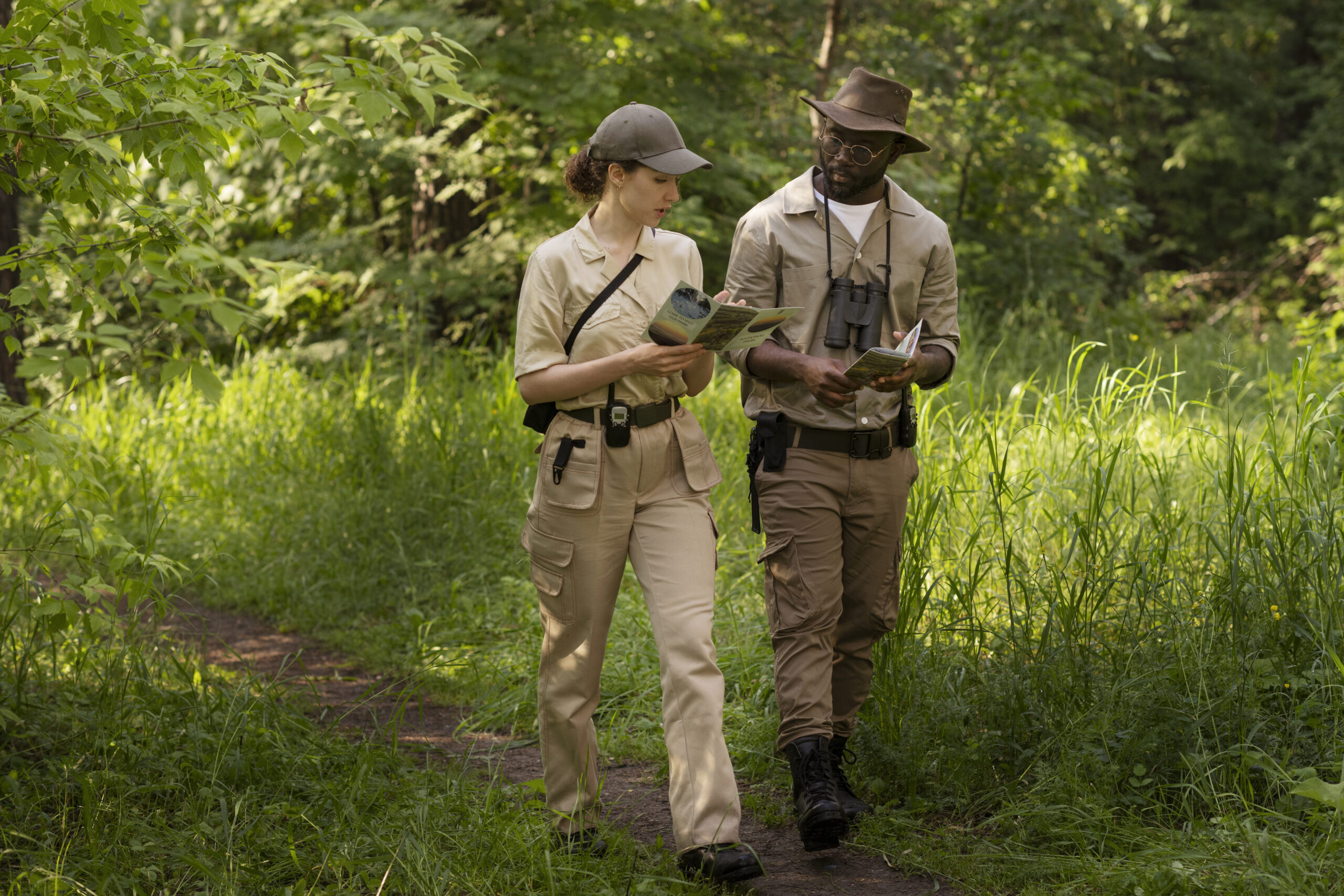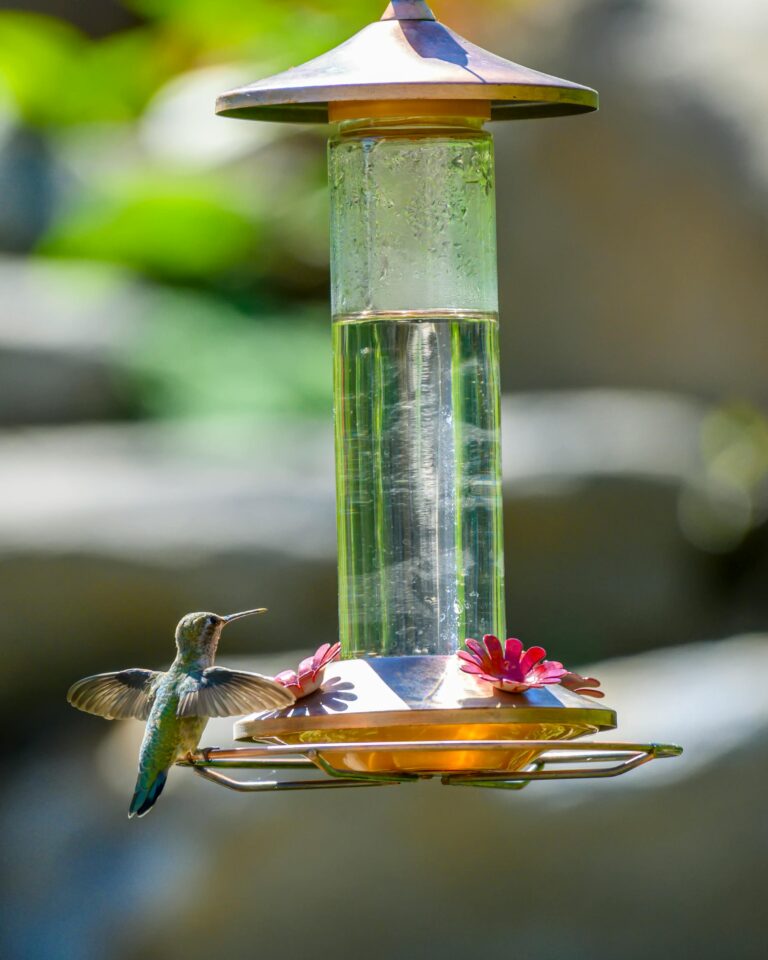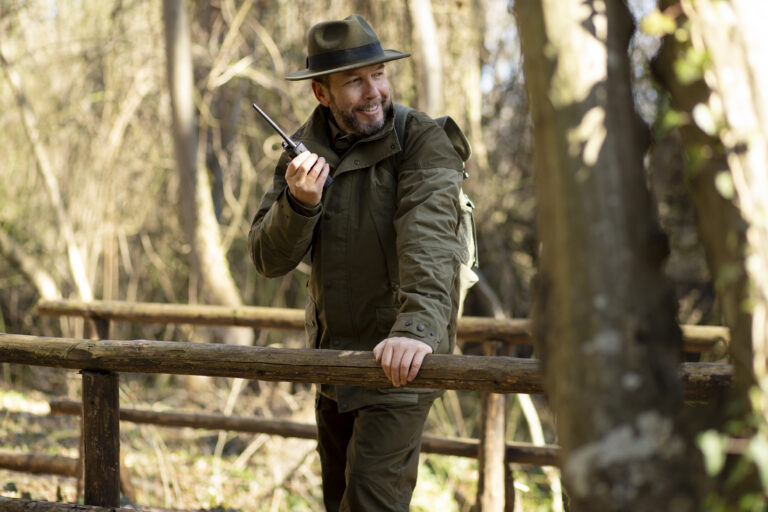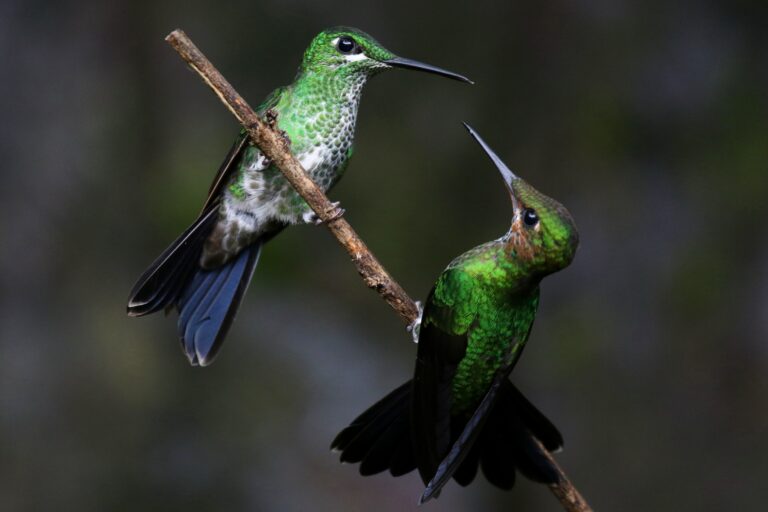3 best upland game bird hunting vests
An upland bird hunter, you know how important the right gear is to make your day in the field enjoyable and successful.
One essential piece is a quality hunting vest designed to carry your gear, keep you organized, and provide comfort during long walks through tough terrain.
With so many options out there, choosing the perfect vest can feel overwhelming. That’s why we’ve tested and reviewed some of the best upland hunting vests on the market.
In this guide, we’ll highlight three standout vests that balance durability, storage capacity, breathability, and comfort.
Whether you need a vest with plenty of pockets for shells and gear, a rugged design for rough brush, or a lightweight option for fast-paced hunts, these vests deliver reliable performance to help you focus on the hunt not your equipment.
I’ve hunted pheasants in South Dakota’s crisp prairies, flushed quail in Texas’s thorny brush, and stalked grouse in Michigan’s dense woods.
Vest 1: Browning Bird’n Lite Strap Vest

In South Dakota’s pheasant fields, the Browning Bird’n Lite Strap Vest balanced weight perfectly during fast flushes. Its padded harness and quick-access shell loops kept me comfortable and ready.
| Key Specs | Details |
|---|---|
| Weight | 2.5 lbs |
| Material | Ripstop nylon, canvas |
| Blaze Orange Coverage | 150 sq. inches |
| Pouch Capacity | 3–4 pheasants |
| Ammo Loops | 12 shotgun shell loops |
| Hydration Compatibility | Yes |
Pros: Lightweight with excellent weight distribution. Durable, easy-clean pouch. Ideal for rugged hunts.
Cons: Higher cost. Limited color options.
Top pick for pheasant and chukar hunters needing mobility and hydration.
Vest 2: Badlands Upland Turkey Vest

The Badlands Upland Turkey Vest shone in Texas’s hot, thorny quail country. Its quiet Zip-No magnetic closures and hydration system kept me focused, with a water-resistant pouch for wet conditions.
| Key Specs | Details |
|---|---|
| Weight | 2.7 lbs |
| Material | Softshell, ripstop nylon |
| Blaze Orange Coverage | 160 sq. inches |
| Pouch Capacity | 3–4 birds |
| Ammo Loops | 12 shotgun shell loops |
| Hydration Compatibility | Yes |
Pros: Silent magnetic closures. Hydration-compatible and durable. High blaze orange coverage.
Cons: Premium price. Slightly bulky for smaller frames.
Perfect for quail or pheasant hunters in warm climates.
Vest 3: Upland Hunting Vest with Game Bag

Hunting grouse in Wisconsin’s thick cover, the Upland Hunting Vest with Game Bag kept gear organized with nine compartments. Its spacious pouch handled five birds without mess.
| Key Specs | Details |
|---|---|
| Weight | 2.4 lbs |
| Material | Ripstop nylon |
| Blaze Orange Coverage | 145 sq. inches |
| Pouch Capacity | 4–5 grouse |
| Ammo Loops | 10 shotgun shell loops |
| Hydration Compatibility | Yes |
Pros: Nine compartments for organization. Lightweight and breathable. Easy-clean pouch.
Cons: Straps may need tweaking for larger frames. Lesser-known brand.
Great for organized grouse or quail hunters.
Comparison Table
| Feature | Browning Bird’n Lite | Badlands Upland | Upland Vest |
|---|---|---|---|
| Game Pouch Size | 3–4 pheasants | 3–4 birds | 4–5 grouse |
| Blaze Orange Coverage | 150 sq. in. | 160 sq. in. | 145 sq. in. |
| Weight Capacity | 10 lbs | 12 lbs | 9 lbs |
| Hydration Compatibility | Yes | Yes | Yes |
| Price Range | $$ $ | $$$$ | $$ |
This table helps match vests to your hunting needs—pheasant, quail, or grouse—based on climate and gear load.
Buyer’s Guide: Choosing the Best Upland Hunting Vest
Durability tackles tough uplands. Ripstop nylon or canvas resists briars. Weather-resistant coatings and reinforced stitching ensure seasons of use.
Game pouches need space and function. Blood-proof, ventilated pouches holding 3–5 birds keep things clean. Side zippers enable quick access.
Ammo storage demands speed. Quick-access loops (10–20) allow fast reloads. Deep pockets secure extra shells, GPS, or dog remotes.
Comfort fuels long hunts. Adjustable straps and padded harnesses reduce strain. Breathable mesh backs prevent overheating in early-season heat.
Weight distribution keeps you agile. Padded waist belts shift weight to hips, balancing front pockets and rear game bags for less fatigue.
Safety is critical. Blaze orange panels (140+ sq. inches) ensure visibility in tall grass or cover, meeting most state regulations.
Extra features add utility. Hydration compatibility suits hot days. Zippered pockets and D-rings secure valuables or radios.
Understanding How We Tested the Best Upland Hunting Vests
When choosing the best upland hunting vests, thorough testing in real-world conditions is essential to ensure they meet the needs of hunters.
I evaluated each vest across multiple factors durability, comfort, storage, visibility, and hydration compatibility—while using them in varied environments.
Below, I’ll break down the testing process in detail, making it clear and understandable for everyone, whether you’re a seasoned hunter or new to the sport.
Testing Environments: Where the Vests Were Used
To ensure the vests performed well in different hunting scenarios, I tested them in diverse upland environments:
- South Dakota Pheasant Fields: These areas were cold, often below freezing, with tall grass and uneven terrain. The vests faced chilly winds, light snow, and rough ground cover.
- Texas Quail Grounds: These hunts took place in hot, dry conditions, with temperatures sometimes exceeding 90°F. The landscape included thorny brush, sandy soil, and open fields.
- Other Uplands: I also tested in mixed terrains like rolling hills, rocky outcrops, and dense brush to mimic the variety of conditions upland hunters encounter.
Each vest was used for at least 20 hours in the field, ensuring enough time to evaluate performance across long, demanding hunts.
Field Use: Simulating Real Hunting Conditions
To mimic the physical demands of upland hunting, I put the vests through realistic scenarios:
- Hiking: I walked several miles per hunt, often on uneven terrain, to test how the vest held up under constant movement.
- Climbing: Some hunts involved climbing over fences, small hills, or rocky areas to assess how the vest’s straps and weight distribution affected mobility.
- Crawling Through Brush: I moved through dense, thorny vegetation to see how the vest materials handled snags and abrasions.
Each vest carried a load of 8–12 pounds, which included:
- Shotgun shells (various gauges, typically 12 or 20).
- Water bottles or hydration bladders (1–2 liters).
- Harvested birds (pheasants, quail, or similar game).
This load simulated what a typical hunter might carry during a full day in the field.
Durability: Testing Against Tough Conditions
Durability is critical for a hunting vest, as upland environments can be harsh. I tested each vest’s ability to withstand:
- Thorns and Brush: I intentionally moved through thickets of thorny plants, like mesquite or blackberry bushes, to check for tears, punctures, or fraying in the fabric.
- Rocks and Abrasion: I brushed against rocky surfaces and knelt on gravel to test the vest’s resistance to scuffs and wear.
- Weather Exposure: The vests faced cold, wet conditions in South Dakota (light rain or snow) and intense heat in Texas. I checked for water resistance, color fading, or material breakdown after prolonged exposure.
After each hunt, I inspected the vests for:
- Tears or holes in the fabric.
- Stitching failures, especially around pockets or straps.
- Wear on high-contact areas like shoulders or waistbands.
Comfort: Evaluating All-Day Wear
Comfort is key for a vest you’ll wear for hours while hunting. I assessed each vest based on:
- Strap Adjustability: I adjusted the shoulder and waist straps to fit different body sizes and checked how securely they stayed in place during movement. I noted if straps dug into shoulders or slipped loose.
- Breathability: In Texas’s heat, I evaluated how well the vest’s materials (like mesh panels) allowed air circulation to prevent overheating. In colder South Dakota conditions, I checked if the vest retained too much heat or felt clammy.
- Fatigue: After 8–10 hour hunts, I assessed whether the vest caused discomfort, such as shoulder soreness or lower back strain, especially when carrying a full load.
I also considered how the vest distributed weight (e.g., shells and birds) to avoid uneven pressure points that could tire a hunter out.
Storage: Testing Capacity and Accessibility
A good upland hunting vest needs practical storage for gear and game. I tested each vest’s storage features by:
- Game Pouches: I loaded the rear game pouches with 3–5 birds (e.g., pheasants or quail) to evaluate capacity, ease of loading, and how securely the birds stayed in place. I checked if the pouches sagged or made movement awkward.
- Shell Loops and Pockets: During simulated bird flushes, I practiced quickly grabbing shells from loops or pockets to test accessibility. I noted how many shells the vest could hold (typically 10–20) and whether they were easy to reach without looking.
- Additional Pockets: I used other pockets for essentials like a GPS, phone, or small first-aid kit, checking for zipper quality, pocket depth, and ease of access while walking.
I also tested how the vest balanced when fully loaded, ensuring it didn’t pull backward or shift uncomfortably.
Blaze Orange Visibility: Ensuring Safety in Low Light
Safety is critical in group hunts, so I verified each vest’s blaze orange visibility, which is often required for upland hunting. I tested this in:
- Low-Light Conditions: Early morning or late evening hunts allowed me to check how well the blaze orange stood out in dim light or fog.
- Distance Visibility: I had a hunting partner observe the vest from 50–100 yards away in various terrains (grass, brush, open fields) to confirm it was easily noticeable.
I also checked if the blaze orange faded after exposure to sun or washing, as consistent visibility is essential for safety.
Hydration Systems: Checking Compatibility and Performance
Many hunters rely on hydration bladders or water bottle pockets during long hunts. I tested each vest’s hydration features by:
- Hydration Bladder Compatibility: For vests with bladder compartments, I used a 1–2 liter bladder and checked for:
- Leaks during movement or when crawling.
- Ease of inserting and removing the bladder.
- Comfort of the drinking tube (e.g., did it stay accessible without dangling?).
- Water Bottle Pockets: For vests with bottle holders, I tested how securely they held standard 16–32 oz bottles and whether they were easy to access without stopping.
I also evaluated how the added weight of water affected the vest’s balance and comfort.
Why This Testing Matters
By putting each vest through these rigorous tests, I ensured they were evaluated in conditions that mirror real upland hunting. This approach helps hunters of all experience levels—whether teenagers new to the sport or older adults looking for reliable gear—choose a vest that’s durable, comfortable, and practical. The goal was to identify vests that can handle tough terrains, keep you safe, and make your hunt more enjoyable without weighing you down.
If you have specific questions about the testing process or want details on how a particular vest performed, let me know!
Discovering the Best Pheasant Hunting Locations Worldwide
Pheasant hunting is a thrilling outdoor activity enjoyed by hunters of all ages, and finding the top spots can make your experience unforgettable. Based on extensive research and insights from seasoned hunters, the best pheasant hunting locations in the world offer a combination of high bird populations, accessible land, and supportive hunting cultures. Below, I’ll detail the top destinations, focusing on their unique features, and explain why they stand out, keeping the information clear and engaging for everyone.
South Dakota, USA: The Pheasant Capital of the World
South Dakota is widely regarded as the premier destination for pheasant hunting globally, often called the “Pheasant Capital of the World.” Here’s why:
- High Pheasant Populations: South Dakota consistently reports some of the highest pheasant harvests, with over 1.1 million roosters bagged in the 2023 season, an 8.6% increase from 2021. The state’s vast grasslands, agricultural fields, and Conservation Reserve Program (CRP) lands create ideal habitats for wild pheasants.
- Abundant Public Land: The state offers over 12 million acres of public hunting land, including Game Production Areas, Waterfowl Production Areas, and Walk-In Areas. Counties like Lyman, Tripp, Brown, Spink, Brule, and Beadle are hotspots for high harvests.
- Supportive Hunting Culture: Towns such as Mitchell, Chamberlain, Aberdeen, Winner, Pierre, and Huron cater to hunters with dog-friendly motels, bird-cleaning stations, and local events. Smaller “sleeper” counties like Bennet (near Martin) and Roberts (near Sisseton) also offer excellent hunting.
- Season and Regulations: The pheasant season runs from October 19, 2024, to January 31, 2025, with a daily bag limit of 3 roosters and a possession limit of 15.
- Why It’s the Best: South Dakota’s combination of abundant wild birds, extensive public access, and a long hunting season makes it unmatched. Hunters can pursue both wild and stocked birds, and the state’s infrastructure supports memorable trips.
Other Top U.S. States for Pheasant Hunting
While South Dakota leads, several other U.S. states offer exceptional pheasant hunting, each with unique advantages:
Kansas
- Why It’s Great: Kansas is known for consistent pheasant populations, particularly in the northwest and north-central regions. The state provides over 12,000 acres of public land and 341,000 acres of Walk-In Hunting Access (WIHA) in the northwest, plus 75,500 public acres and 294,000 WIHA acres in the north-central region.
- Key Areas: Towns like Goodland, Colby, Phillipsburg, Hays, Concordia, and Salina are excellent bases. The southwest (e.g., Dodge City, Garden City) can be productive but depends on weather conditions.
- Season and Limits: The season runs from November 12, 2024, to January 31, 2025, with a daily limit of 4 roosters and a possession limit of 16.
- Unique Features: Kansas’s mix of prairies, crop fields, and CRP land supports robust pheasant populations, and its hunting atlas provides detailed maps for planning.
Iowa
- Why It’s Great: Iowa boasts a strong pheasant population, with 270,000 roosters harvested in 2015, and a supportive hunting community. The Iowa Habitat and Access Program offers 25,000 acres of private land for walk-in hunting, plus 360,000 acres of Wildlife Management Areas, with 103,197 acres suitable for pheasants.
- Key Areas: Northwest Iowa is traditionally the best, though counties like Marshalltown, Cedar Rapids, and Oskaloosa can shine depending on weather.
- Season and Limits: The season runs from October 26, 2024, to January 10, 2025, with a daily limit of 3 roosters and a possession limit of 12.
- Unique Features: Events like the Neal Smith Wildlife Refuge’s Tail and Spur contest in Prairie City add a fun, community-driven element to hunting.
North Dakota
- Why It’s Great: North Dakota offers 2.5 million acres of public hunting land, including the Private Land Open to Sportsmen (PLOTS) program, which targets 1 million acres annually. The state’s wide-open spaces and agricultural fields are pheasant havens.
- Key Areas: The southwest corner (e.g., Mott, Scranton, Bowman) is a hotspot, with good hunting also in the southeast (e.g., Ellendale, Edgeley) and along the Missouri River.
- Season and Limits: The season runs from October 12, 2024, to January 5, 2025, with a daily limit of 3 roosters and a possession limit of 12.
- Unique Features: The PLOTS atlas and GPS downloads make navigating public lands easy, and the state’s diverse terrain suits both dog-assisted and solo hunters.
Minnesota
- Why It’s Great: Minnesota is a top state for pheasant harvests, with an average of 350,000 roosters annually. The southwest, west-central, and east-central regions offer excellent cover with CRP fields and cattail sloughs.
- Key Areas: Towns like Worthington, Pipestone, Marshall, Montevideo, Redwood Falls, Austin, and Hinckley are hunter-friendly. The state has 1.29 million acres of public land, including Wildlife Management Areas (WMAs) and Walk-In Access plots.
- Season and Limits: The season runs from October 12, 2024, to January 1, 2025, with a daily limit of 2 roosters (increasing to 3 after December 1) and a possession limit of 6 (increasing to 9).
- Unique Features: Minnesota’s WMA locator and mobile map apps make finding pheasant-friendly public land straightforward.
International Pheasant Hunting Destinations
While the U.S., particularly South Dakota, dominates pheasant hunting, a few international locations are also noteworthy:
United Kingdom
- Why It’s Great: The UK has a long tradition of pheasant hunting, especially in England and Scotland, where driven hunts (where birds are flushed by beaters toward waiting hunters) are popular. Estates in areas like Yorkshire, Norfolk, and the Scottish Borders offer well-managed pheasant populations.
- Unique Features: The UK’s hunts are often more formal, with guided experiences on private estates. The season typically runs from October 1 to February 1, and hunters can expect a mix of wild and released birds.
- Considerations: Access is often through paid shoots or hunting lodges, which can be costly, but the scenic countryside and cultural experience add unique appeal.
France
- Why It’s Great: France offers pheasant hunting in regions like Normandy and Brittany, where agricultural fields and woodlands provide good habitat. Guided hunts and hunting preserves are common, catering to international visitors.
- Unique Features: The season aligns with the UK’s, running from autumn to late winter. France’s culinary tradition makes it a great destination for hunters who enjoy preparing their game.
- Considerations: Language barriers and regulations may require hiring a local guide, but the experience is rewarding for those seeking a European adventure.
Why South Dakota Stands Out as the Best
While Kansas, Iowa, North Dakota, Minnesota, the UK, and France all offer excellent pheasant hunting, South Dakota is the clear winner due to:
- Unmatched Bird Numbers: Harvests exceeding 1 million annually dwarf other regions.
- Vast Public Access: Over 12 million acres of public land make it accessible for DIY hunters, unlike the more private or guided hunts in Europe.
- Long Season: The extended season (October to January) provides flexibility for planning trips.
- Hunter-Friendly Infrastructure: From small-town accommodations to detailed hunting atlases, South Dakota makes the experience seamless.
Tips for Planning Your Pheasant Hunt
To make the most of your trip to these top locations:
- Check Regulations: Always verify season dates, bag limits, and licensing requirements through state or country wildlife agencies (e.g., South Dakota Game, Fish, and Parks: https://gfp.sd.gov).
- Use a Dog: A well-trained hunting dog can significantly improve your success, especially in dense cover.
- Research Public Land: Use tools like South Dakota’s Public Hunting Atlas, North Dakota’s PLOTS atlas, or Minnesota’s WMA locator to find prime spots.
- Consider Weather: In colder months (November–December), pheasants concentrate in thicker cover, which can improve hunting success in places like Montana.
- Gear Up Properly: Based on my previous testing of upland hunting vests, choose a durable, blaze-orange vest with ample storage for shells and birds, and ensure it’s comfortable for long days in the field.
For the best pheasant hunting in the world, South Dakota is the top choice due to its unparalleled bird populations, vast public lands, and hunter-friendly environment.
Other U.S. states like Kansas, Iowa, North Dakota, and Minnesota offer fantastic alternatives with their own unique strengths, while international destinations like the UK and France provide a cultural twist for adventurous hunters.
Wherever you go, plan ahead, respect local regulations, and enjoy the thrill of the chase!
If you’d like specific recommendations for outfitters, public land maps, or gear tailored to these locations (like the upland vests I tested), let me know!
FAQs
What makes an upland hunting vest different from a regular hunting vest?
Upland vests prioritize mobility, large game pouches, and shell loops for fast-paced bird hunts. Regular vests focus on static hunting with less specialized storage.
Do I need blaze orange for upland bird hunting?
Yes, blaze orange (140+ sq. inches) is essential for safety in group hunts or dense cover. Most states require it to prevent accidents.
Can these vests be used for waterfowl hunting?
Browning and Badlands work for waterfowl due to weather resistance and storage. Upland designs, however, prioritize mobility over waterfowl-specific needs like insulation.
Conclusion
The Browning Bird’n Lite, Badlands Upland, and Upland Hunting Vest with Game Bag are the top upland hunting vests for 2025. Browning excels for pheasant hunters with balanced mobility. Badlands suits warm-climate quail hunts with hydration. The Upland Vest offers organized storage for grouse hunters. Choose based on your hunting style, climate, and gear needs for a seamless experience.
I’d love to hear about your upland hunts or favorite vests! Connect with me on X or in the comments to share tips and gear insights. Let’s make your next hunt epic







